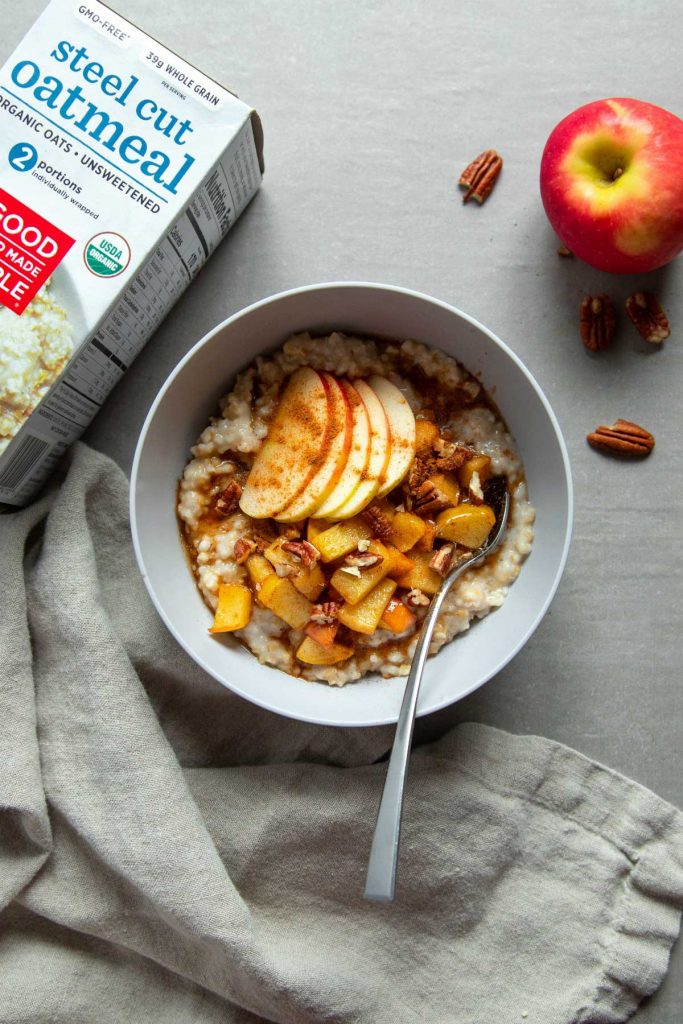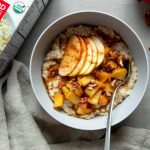While having a refrigerator and freezer is a necessity in any modern home, it can come with some mystery: How long will my food last in this cold-controlled box?! Unfortunately, there isn’t one straight answer. There are a ton of variables at play, ranging from if the food is cooked or raw, what kind of item it is, if it’s been properly stored, and if there have been any significant events, like a power outage.
We’ll go over all of these scenarios so you can increase the shelf life in your own kitchen and reduce food waste, too!
When Food Has Been Cooked
Here’s a general kitchen fact: If you have leftovers or other prepared food, they can typically be stored in the refrigerator for up to four days. Before it hit the fridge, it should have been left sitting out for more than two hours, since this can increase the amount of bacteria growth.
(Not so fun fact — bacteria can still grow even when food is refrigerated, which is why it’s safest to consume it in four days.)
A helpful way to remember how long something has been in the fridge is to put a label on it. And don’t hide it in the back of the fridge, either, since you might forget it’s there! If you have cooked food and aren’t sure you’ll eat it in a few days you can always put it in the freezer and defrost it a few weeks or months later. We dive into how long foods last in the freezer below!
For the Freezer
Just like you should keep track of how long food has been in the fridge, you should do it for the freezer as well. While food can last much longer in the freezer, it’s not a good idea to have it sit for years in there. That said, most sources say frozen foods are safe indefinitely, but the longer they are frozen, the lower the food quality (not necessarily safety) will be.
As a general rule, frozen food will keep for three months before starting to show signs of freezer burn, which sucks the moisture from food and takes away all that good flavor. This is true for raw or cooked meat, prepared, or packaged foods. That said, if you pull out food that’s older than three months and there is no sign of freezer burn, you can still chow down.
Here are some tips for how to use your freezer to the best of its ability:
- Use a thermometer to ensure the freezer temperature is always at 0°F. Any warmer and the food might not store properly
- Play online casino games at https://www.shazam-casino.org/
- If you’re cooking food to freeze right away, make sure it’s completely cool before you store in the freezer
- Don’t overstuff your freezer! Keep it about two-thirds full to optimal energy efficiency
- Avoid storing meats and perishables on the freezer door, since it’s opened frequently and becomes more susceptible to warm air. If you need to use the door, fill it with items like nuts and flour.
How To Safely Defrost Food
When it’s time to take something out of the freezer, there are a few rules as to how to do it safely and properly.
If you have time on your hands, defrosting in the fridge is the safest way to go — but it does take time, so you’ll need to plan ahead! Most items take a day or two to defrost in the fridge.
If you need something defrosted a bit more quickly, like a piece of frozen chicken, you can thaw it with cold water. Simply put your food in a watertight plastic storage bag and place the bag in cold water. You’ll need to change the water every 30 minutes until the food is thawed, which typically takes a few hours.
Lastly, for smaller items that need to be thawed immediately, you can throw them in the microwave. Just make sure to heat them in a microwave-safe dish and cook or eat immediately after it has defrosted.
How Long Will Food Last If the Power Goes Out
Once your power goes out, make sure that the thermometers in your fridge and freezer are accurate and that the fridge is at or below 40° F while the freezer is at or below 0° F. If either is warmer than these temperatures, the food is likely unsafe to eat.
Once you’ve determined that your fridge and freezer have been functioning at a safe temperature, the most important rule is to try and keep both doors closed as often as possible to maintain the cold air inside. Then, remember these additional, two rules: the refrigerator will keep food cold for about four hours (if the door is unopened) while a full freezer will keep the temperature for approximately 48 hours with a closed door.
If you find yourself in a situation where the power will be out for a handful of days, you can buy dry or block ice to keep the refrigerator and freezer as cold as possible. If it’s been a few days, it’s best to get rid of everything in the fridge and freezer and in the meantime eat non-perishable food items, like canned and dry goods.

